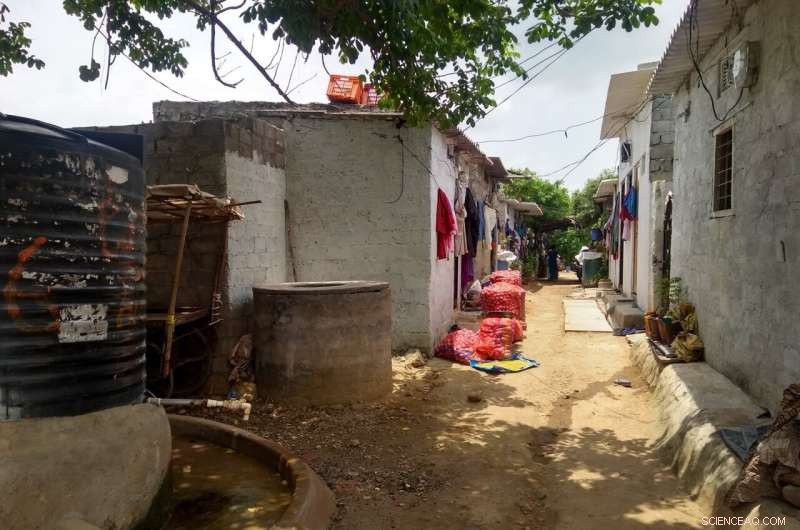
Esta foto foi tirada em uma área periurbana perto de Hyderabad, na Índia. Em primeiro plano, você pode ver a infraestrutura disponível para o abastecimento de água. A área ainda não foi conectada ao sistema de água encanada, mas esses grandes poços de água podem ser abastecidos com água da chuva ou com água entregue na área por caminhões. No meio-termo, avistam-se grandes sacos de alimentos, que podem ser transportados para a área por meio de veículos, gado e à mão. Ao fundo, o espaço verde remanescente está presente – um forte contraste com as habitações relativamente densas no meio termo. Crédito:Professor Simon Willcock
O mundo em que vivemos é frequentemente dividido usando uma distinção binária urbano-rural, apesar de um enorme gradiente de padrões de assentamento dentro e ao redor das cidades – desde as áreas urbanas até as áreas rurais mais remotas. Nova pesquisa conduzida por meio de um projeto de pesquisa conjunto Reino Unido-Índia e publicada em
Nature Sustainability , considera a urbanização observando as mudanças na infraestrutura natural, projetada e institucional. O estudo, focado no Sul Global, sugere que mudanças rápidas nas áreas suburbanas (denominadas "peri-urbanas") resultam em pessoas que vivem nessas áreas tendo uma qualidade de vida pior do que as pessoas que vivem em áreas urbanas e rurais.
"A população urbana do mundo continuará a crescer levando a um planeta cada vez mais urbanizado, muitas vezes resultando em expansão urbana, à medida que as cidades se estendem incorporando terras ao seu redor. Essa expansão das cidades é especialmente rápida nos países em desenvolvimento da Ásia e da África", diz o professor Kenneth Lynch (Universidade de Gloucestershire).
O professor Simon Willcock, da Universidade de Bangor e da Rothamsted Research, afirma:"À medida que as áreas urbanas se expandem, as características e os serviços disponíveis nas áreas mudam. a infraestrutura construída mostra o padrão oposto. Isso às vezes também é acompanhado por uma mudança da liderança local tradicional em locais rurais para uma governança mais central nas cidades."
A pesquisa apresenta uma nova teoria da Turbulência Peri-Urban, como explica o Dr. Paul Hutchings da Universidade de Leeds:-áreas urbanas. Por exemplo, quando a extração de produtos da natureza tem um alto custo ambiental, então a natureza só pode sustentar um pequeno número de pessoas. Em uma situação como essa, os recursos que vêm do mundo natural provavelmente desaparecerão antes que possam ser substituídos por infraestrutura construída."
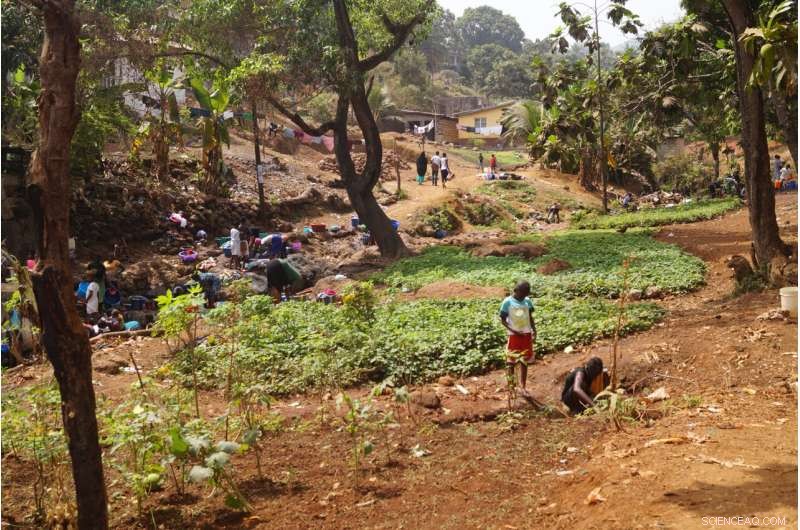
Esta foto foi tirada entre dois bairros olhando para um riacho perto de Freetown, Serra Leoa. Em primeiro plano você pode ver duas crianças extraindo água de um poço para regar pequenas hortas atrás delas. No meio-termo, um grupo de mulheres e crianças lavando roupas e a si mesmos no córrego e subindo a encosta e atrás das bananeiras, as residências, algumas das quais em construção. You can also observe, rubbish littering the catchment, building materials in the form of boulders, some of which have been arranged to reduce erosion and landslip and dotted about some mature trees, some of which show evidence of having branches removed for fuelwood. Credit:Professor Kenneth Lynch
"Previous evidence supports this. For example, child health in East Africa is lowest in those communities living between the city and countryside, whilst a study in South Africa found that around two thirds of urban and rural citizens report that their quality of life had improved over the last five years, but only half of respondents reported such improvement in peri-urban zones," says Professor Kenneth Lynch.
Professor Simon Willcock explains the limitations of the theory:"This type of negative experience in peri-urban areas is greater for some services than others, and varies across geographic areas. For example, most food is grown in rural areas, but this can also be done within cities. Food can also be transported by road within cities with relative ease. However, there are likely to be big differences between groups living in each context. For example, higher income households and communities living in peri-urban areas have better access to the scarce resources. They can buy-in their own water, electricity, sanitation and so forth."
-
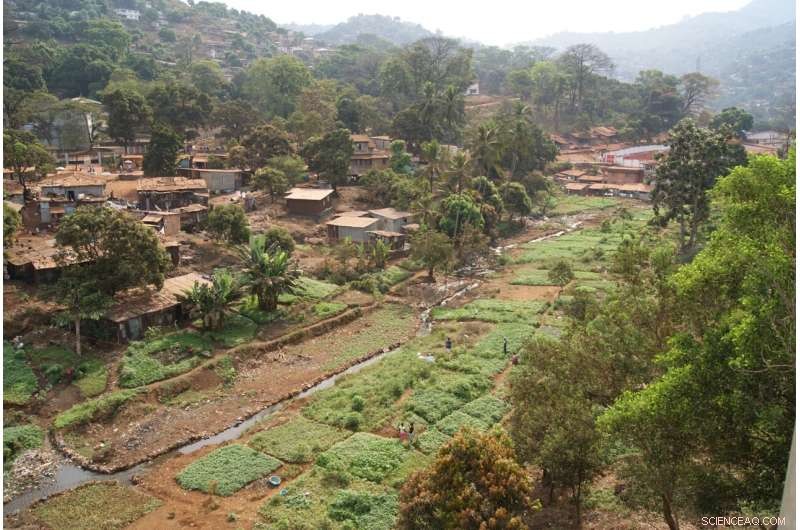
A site that floods during the rainy season that has thus far prevented development, allowing local people to use it for small-scale vegetable gardens near Freetown, Sierra Leone. Since this photo was taken two large developments have encroached on this site displacing the cultivators reducing the cultivated land cover and restricting the drainage channel, exacerbating flood water during the rainy season. Non-biodegradable waste (such as plastic bags and bottles) is used by cultivators to form drainage channels and protect plots from erosion. Credit:Professor Kenneth Lynch
-
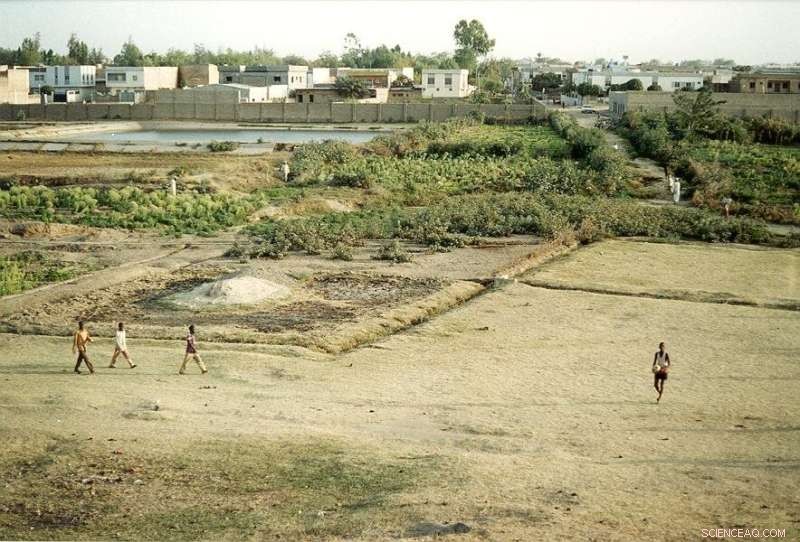
A seasonally flooded site within the old walls of the city of Kano, Northern Nigeria. You can see sites in the foreground are being used for small scale agriculture, but also plots have been marked out for construction and some sand and cement has been deposited ready for the installation of boundary markers. In the background you can see the high value residential areas that have a wall separating their neighborhood from the agricultural site. Many of the cultivators grow rice in the rainy seasons indicating this is for household consumption. During the dry season the cultivable land reduces to very close to the stream which is heavily polluted by nearby clothes dying works and the residential area. Encroachment on this site for residential development will exacerbate flooding further down the watershed. Credit:Professor Kenneth Lynch
-
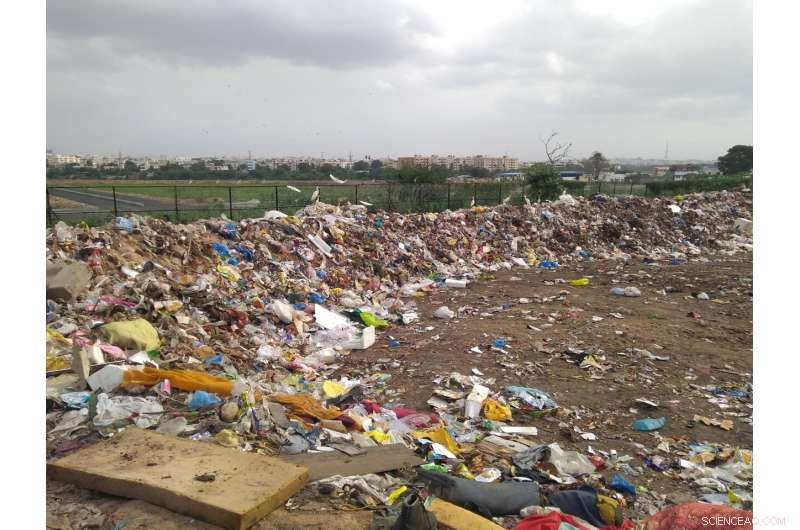
This photo is taken in a peri-urban area near Hyderabad, India. In the foreground, you can see a waste disposal area, receiving waste from the surrounding peri-urban areas, but also from the main city (shown in the background). This waste may present a hazard to the health of those living nearby, and risks polluting the nearby natural areas (shown in the middle ground). Credit:Professor Simon Willcock
Dr. Paul Hutchings concludes, "The bumpy road between natural and built infrastructure can be avoided. Some natural infrastructure can be conserved throughout urbanization through good city planning enforcing protection of green space. As well as this, services, such as municipal water utilities, can be subsidized so that they can be provided to people in peri-urban areas. Urban and rural planners, designers and architects should be working together to pre-empt the needs within newly expanded areas, and act quickly to prevent lower quality of life of the people living there."
+ Explorar mais Study maps urban-rural catchment areas and points to ways to optimize policy and planning coordination for agriculture




